Pyrex is one of those everyday essentials that almost everyone grew up using. Even now-seasoned collectors probably didn’t pay much attention to their mother’s casserole dish back in the day. Pyrex glassware, however, has been a part of most of our lives for quite a while.
Table of Contents
What Is Pyrex?
Pyrex is an ovenware brand developed by Corning glass works in 1915. Technically, “Pyrex” itself is a type of heat-resistant glass (or arguably, a few different kinds of glass mixtures). But now, the brand name is practically synonymous with the material.
What Is Pyrex Glass Made Of?
The pyrex production process was a rather complex and well-celebrated scientific feat. Originally, Pyrex was composed of borosilicate glass (a variation of tempered soda lime glass using silicon dioxide/silica sand and boric acid). Though first used for laboratory glassware, the material quickly found its application in everyday households. Bakers preferred pyrex glass products to ordinary glass because of their heat-resistant and anti-corrosive properties.
You can learn more about Pyrex glass formulas, their chemical composition, and the production process here.
How To Tell If Pyrex Is Vintage:
A Pyrex collection hobby is like all other collections–you eventually develop a knack for it. Once you train your eye and familiarise yourself with the patterns, colors, markers, and other identifiers of vintage Pyrex, authenticating a piece becomes a breeze. To make it even easier, here are five tips on how to tell if your Pyrex is vintage:
1. Take A Look At The Marker:
Before checking if the product is vintage, it’s essential to confirm that it is an authentic pyrex ovenware piece. With so many counterfeit or “second copy” pyrex products in the market, you’re better off authenticating yours at your earliest convenience.
Usually, when we say “vintage,” we mean pyrex products that were produced 20 to 100 years earlier. Anything before that is considered “antique.” The most effective way of checking if your pyrex products are legitimate (and vintage) is to check their marker.
Depending on the production year, a brand marker like the one below marks all authentic vintage “opal ware” (white) pyrex pieces:
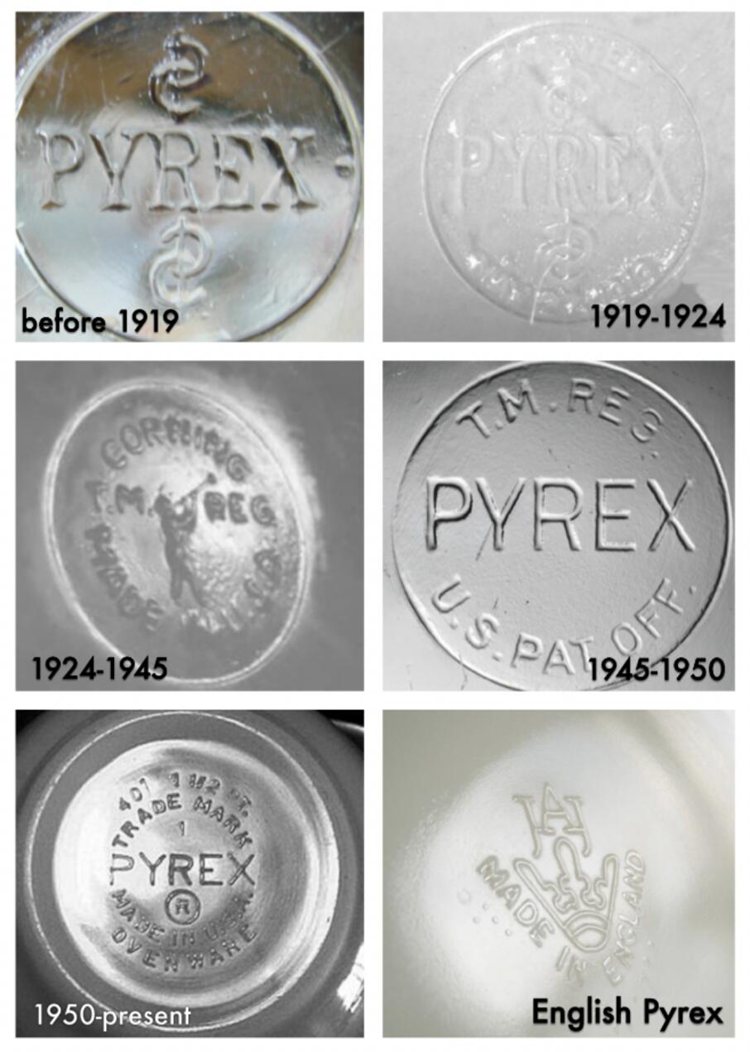
Vintage Pyrex bowls and other cookware is marked with a PYREX marker in all caps. At the same time, the modern variations use a lower-case “pyrex” instead. The most commonly seen vintage mark is this 1950s mark:
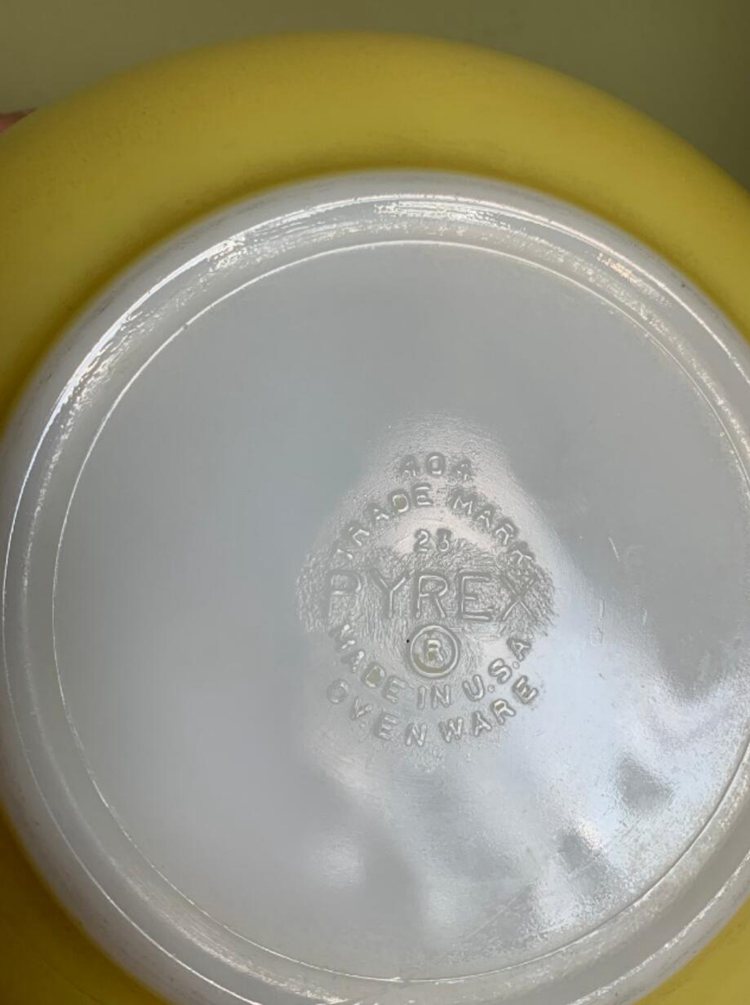
2. Check If It Is One Of The Vintage Shapes:
Another great way to check vintage pieces is to notice their shapes and any additional information in the markers. This additional information usually relates to the production year or the “inventory number,” making it a good test of the vintage quality.
For example, the following vintage shapes are some of the most common in circulation:
- Casserole dishes
- Container Dishes and Hot Dishes
- Mixing Bowls
- Divided Dishes
- Cinderella Bowls
- Chip & Dip Sets
For instance, vintage Pyrex bowls and casserole dishes have a model number included in their bottom marker. You can often trace this model number back to known production years and thus, check the vintage quality. The “403” mark indicates the model number on this nesting bowl:
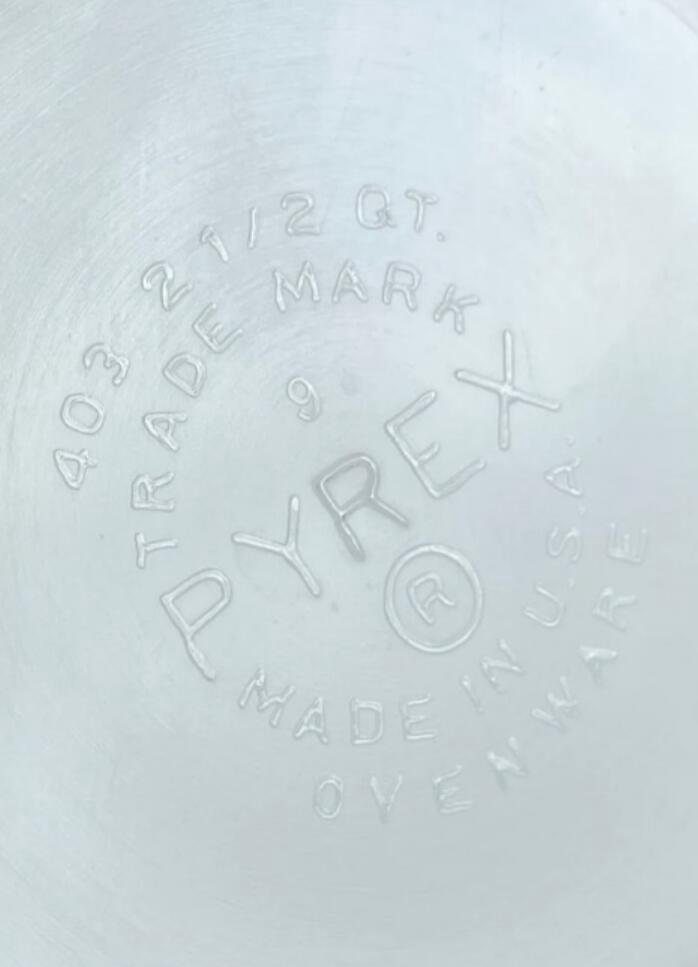
3. Take Notice of The Colors:
Pyrex’s initial popularity can be attributed to the introduction of some iconic colored pieces in the 1940s. The primary colors of red, yellow, green, and blue started the craze for colorware, which eventually consumed the pyrex market.
When it comes to identifying and matching colors to test the vintage status, it can be a little tricky. However, one can draw a general understanding based on the years that a particular color was most commonly used:
The 1940s:
During the 1940s, primary colors were most in fashion. Red, yellow, green, and blue dominated the market altogether.
The 1950s:
Pale and bright yellow, pink and turquoise marked the 1950s. During the same time, Flamingo Pink and Lime Green were also briefly introduced in bakeware.
The 1960s:
The 1960s demanded a warmer color palette, and Pyrex delivered with:
- Earthtones is the “Early American” collection
- Bright yellows and oranges in the “Daisy” collection
- Tan in the “Sandalwood” collection
- Avocado and Yellow-Green in the Verde pattern
- Turquoise-blue in the Horizon Blue pattern collection
The 1970s:
The 1970s marked a continuation of the 1960 color scheme but had attractive additions of its own. Rust shades, golds, specifically Butterfly Gold Spring Blossom Green, Old Orchard, caramel, and chocolate brown were some of the most loved.
SOLID COLORS:
Solid colors (with slight differences in shades) were used extensively across many vintage patterns. Identifying the exact solid pattern and color can be impossible without a visual example.
Luckily, The Pyrex Collector website has a detailed “Pyrex Solid Colors ID Chart” to aid in precisely that. For the color chart and related topics, visit the resource.
4. Identify If Its a Vintage Pattern:
Certain patterns, like colors, were popular in specific eras. Pyrex produced over 150 decorative patterns starting in 1952. This considerable number not only accounts for an elaborate list of collectibles but also makes it tough to identify the pattern year.
The Corning Museum of Glass, CMOG (visit here), has access to almost all of the vintage pyrex patterns produced by Corning glass works. From the many designs, I’ve developed a short year-wise list of some of the most famous:
The 1940s:
- Basic Multicolor Mixing Bowls example on CMOG:
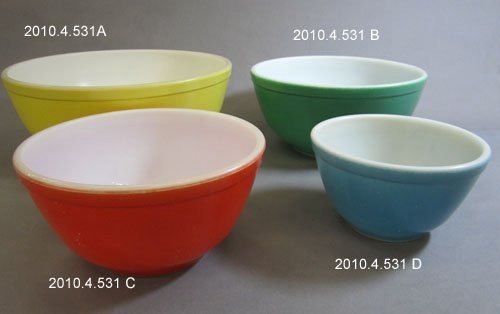
The 1950s:
- Flamingo Pink Bakeware example on CMOG
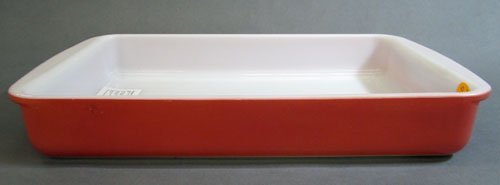
- Lime Green Bakeware example on CMOG
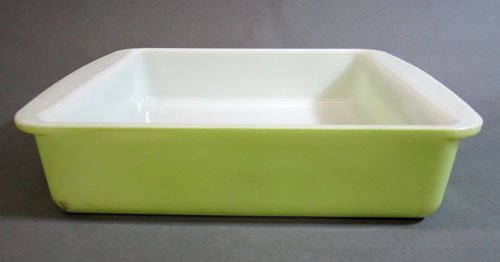
- Desert Dawn example on CMOG
- White Daisy on Pink example on CMOG:
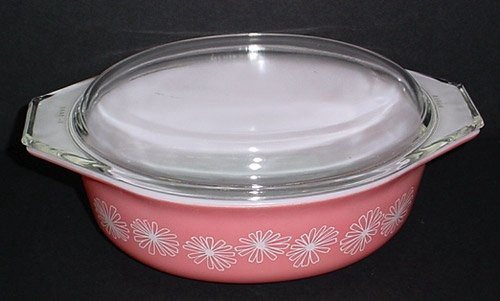
- Embroidery example on CMOG
- Rooster Black example on CMOG
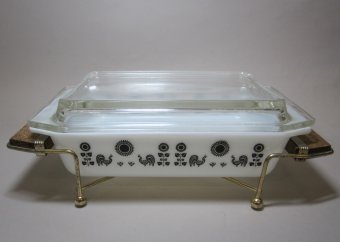
The 1960s:
- Berries example on CMOG
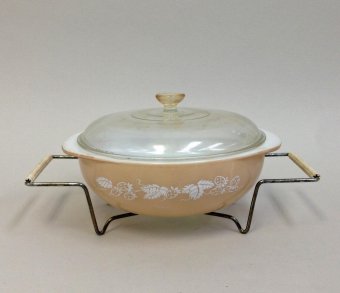
- Sandalwood example on CMOG
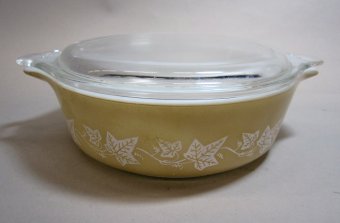
- Zodiac example on CMOG:
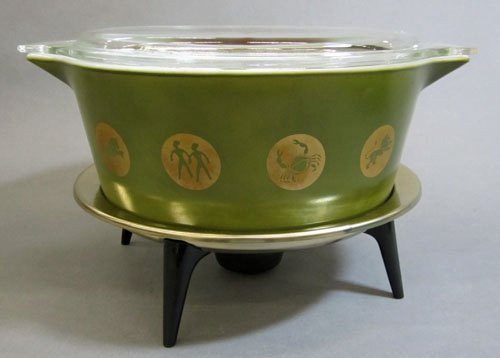
- Early American example on CMOG
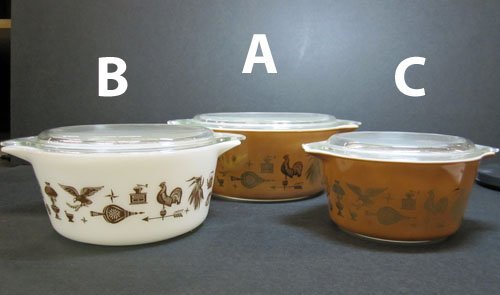
- Town and Country example on CMOG
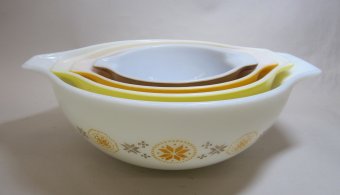
- Verde example on CMOG
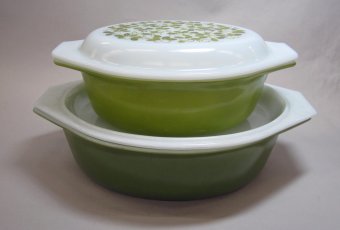
The 1970s:
- Friendship example on CMOG
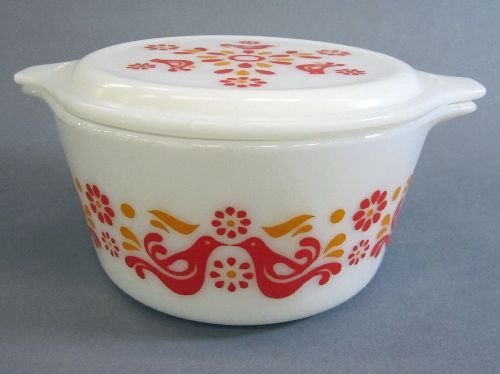
- Butterfly Gold example on CMOG
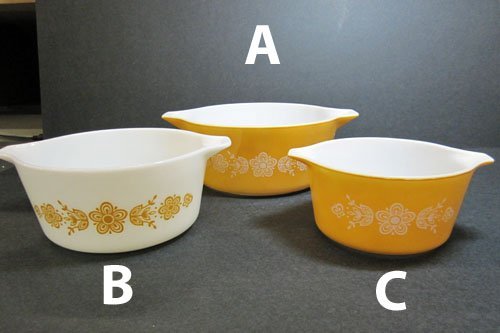
- Spring Blossom Green (1972) example on CMOG:
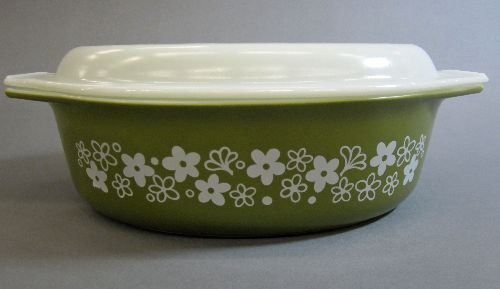
- Old Orchard example on CMOG
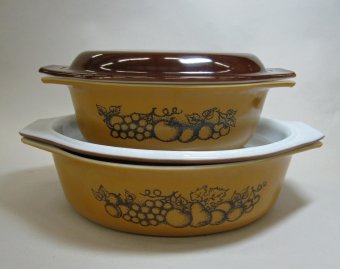
- FlameGlo example on CMOG
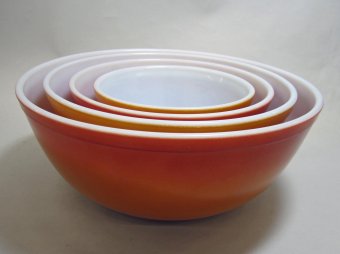
The 1980s:
- Plaid in Rust example on CMOG:
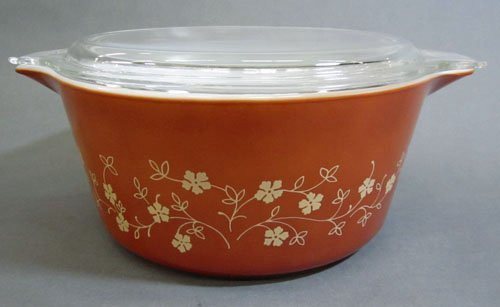
- Forest Fancies example on CMOG
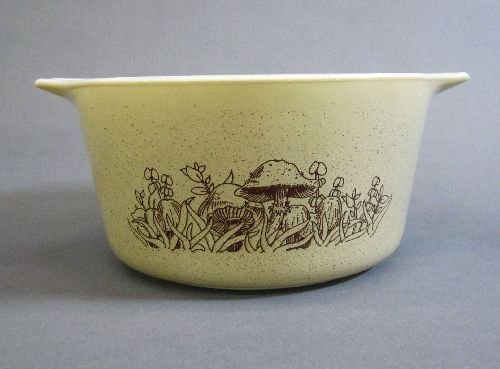
- Homestead 2 example on CMOG:
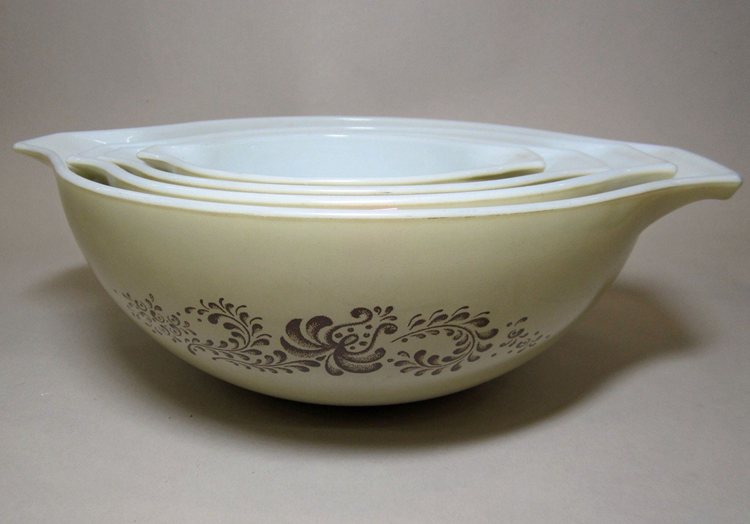
View the complete list of patterns on the CMOG website to find an exact match for your glassware pattern.
Test for Borosilicate Glass vs. Soda Lime Glass:
Making glass, especially tempered glass of the borosilicate nature, is lengthy and strenuous. Many manufacturers over the years preferred other materials that replicated the original borosilicate glass used in vintage Pyrex.
These cheaper variations mean that glass production is more economical for the manufacturers but compromises the product quality. Newer Pyrex often uses a primary soda-lime glass which is less durable. Although this type of glass is resistant to high temperatures in the oven, it does not react well to sudden changes in temperature (unlike borosilicate glass). If a hot dish is placed on a cold surface, it can shatter.
How Can I Tell The Difference?
There are many ways to tell the difference between the two types of glass (granted, some are more accurate than others). I’ve detailed two different techniques down below and would recommend using both to ensure the accuracy of your assessment:
The Hue Test:
- Place your piece against a white background in a well-lit room and closely observe the edges.
- Borosilicate glass will be clear, whereas the soda lime glass will have a green-blue tint.
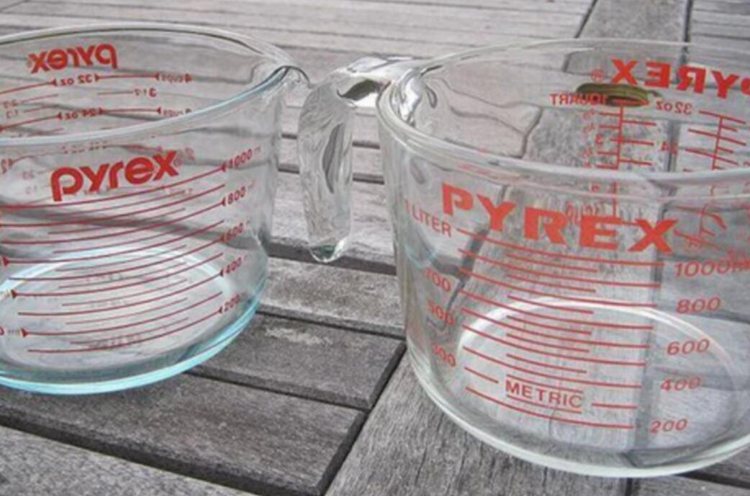
The Mineral Oil/Glycerine Test:
The mineral oil test is another reliable way to check the glass type. Borosilicate glass products have a refractive index of 1.47, the same as mineral oil.
If you submerge the piece in mineral oil and it vanishes, it’s borosilicate.
Suppose you don’t have access to mineral oil. In that case, you can also repeat the same test with Anhydrous Glycerol (Glycerine) as a solvent. Glycerine also has the same refractive index and will produce accurate results.
You can see the test being conducted in this video.
Final Thoughts:
Vintage Pyrex is superior not only in its collection value but also in its chemical properties. It is much more heat resistant and responds well to a sudden change in temperature, making it ideal for kitchen use.
Fortunately, identifying vintage Pyrex is achievable even without a professional evaluation. The simplest method is to check the marker, shape, color, and patterns and test whether it uses the original borosilicate glass.
If your piece checks all the boxes and passes the final test, you can be sure you possess a vintage pyrex piece!

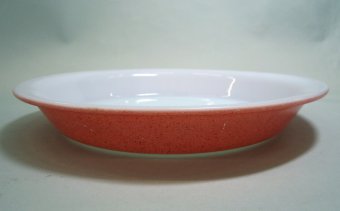
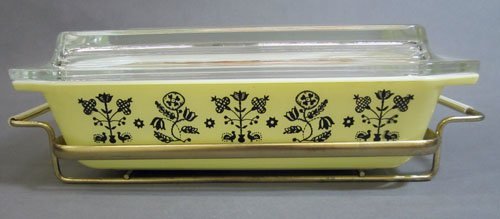




![Where To Sell Antique Furniture In 2022 [Ultimate Guide]](https://www.jacquelinestallone.com/wp-content/uploads/2022/09/Etsy-Your-Place-To-Buy-And-Sell-All-Things-Handmade-600x450.jpg)


